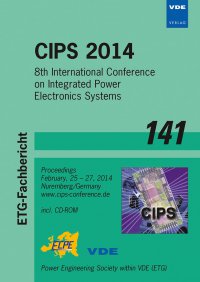Aging of new Interconnect-Technologies of Power-Modules during Power-Cycling
Konferenz: CIPS 2014 - 8th International Conference on Integrated Power Electronics Systems
25.02.2014 - 27.02.2014 in Nuremberg, Germany
Tagungsband: CIPS 2014
Seiten: 6Sprache: EnglischTyp: PDF
Persönliche VDE-Mitglieder erhalten auf diesen Artikel 10% Rabatt
Autoren:
Heuck, N.; Guth, K.; Thoben, M.; Mueller, A.; Oeschler, N.; L. Boewer; Speckels, R.; Krasel, S.; Ciliox, A. (Infineon Technologies AG, Max-Planck-Straße 5, 59581 Warstein, Germany)
Inhalt:
To meet the future requirements of new IGBT generations, the packaging technologies of power modules must withstand higher operation temperatures and higher current densities. Different technologies had been presented in the past to realize chip-to-substrate interconnects with increased reliability and temperature stability. Two main trends became visible: On the one hand porous monometallic silver-layers which are processed by sintering of silver particles were introduced and investigated. On the other hand diffusion soldering has been presented, where the joint is formed from high melting intermetallics. Both technologies could prove a high reliability during power-cycling and a good thermal stability. These two die attach technologies do not limit the power-cycling capability of new module platforms like Infineon’s .XT. However, the potential and limitations of the modern chip-to-substrate interconnects concerning end-of-life powercycling are hardly investigated. Therefore, the focus of this paper is on the analysis and discussion of aging and degradation effects in the new die attach technologies silver-sintering and diffusion soldering.


